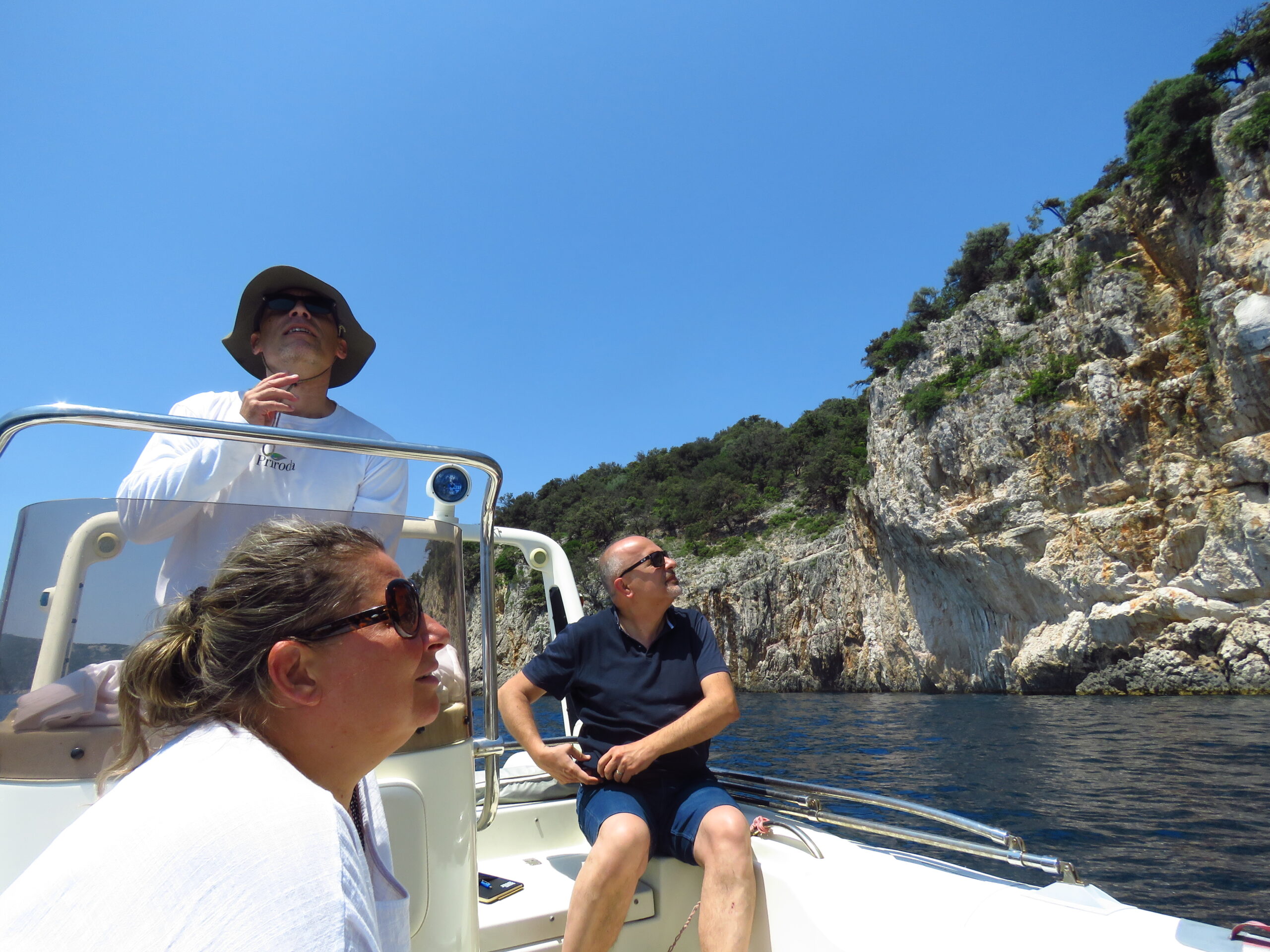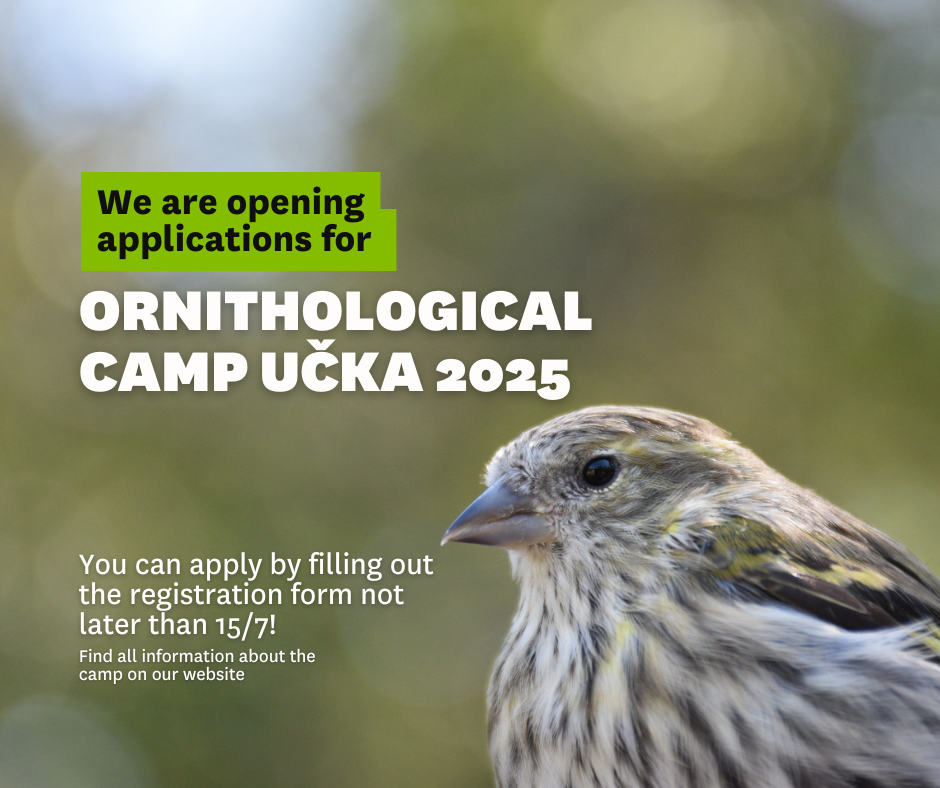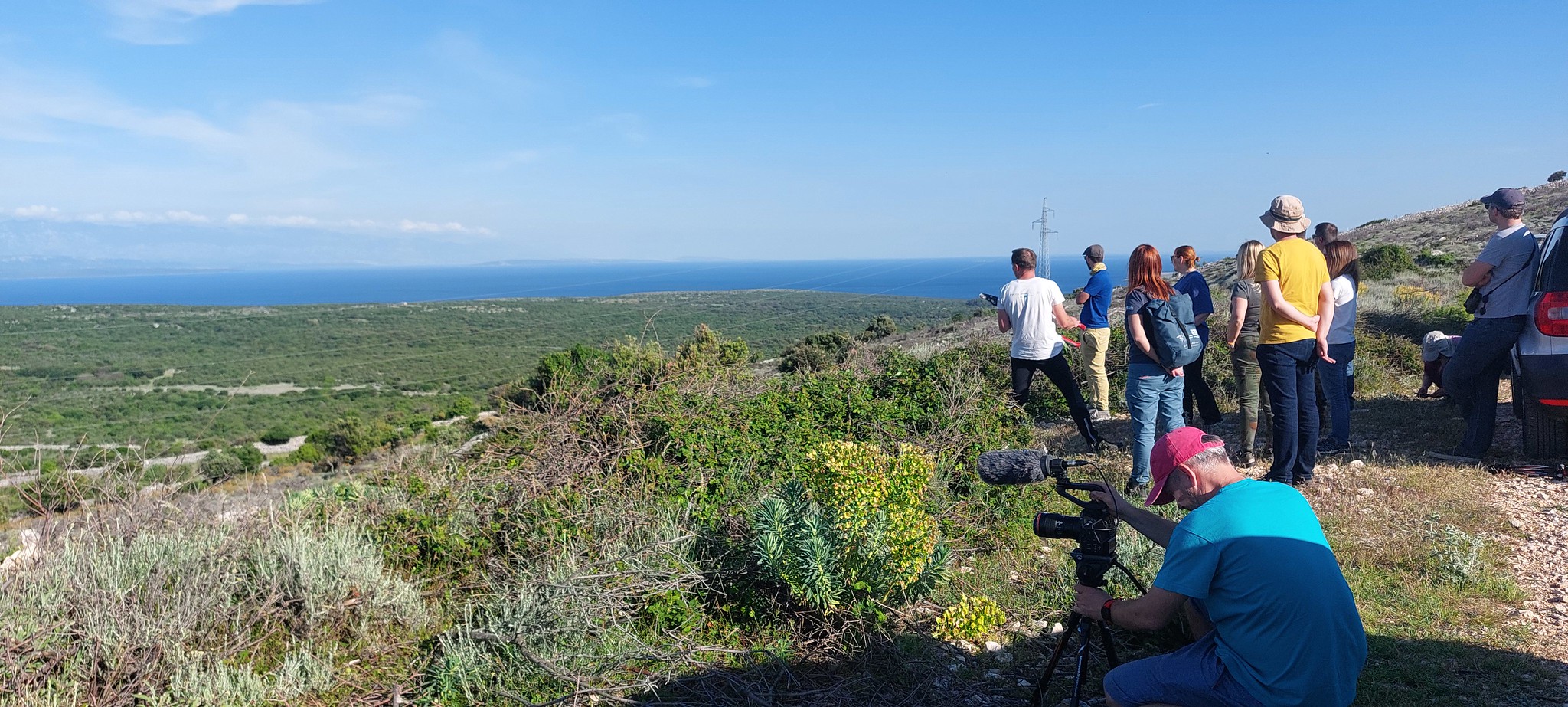Young volunteers from different European countries decided to help in nature conservation in Croatia!
New project of
European Solidarity Corps gathered five motivated young volunteers – Palina from Belarus, Coline from France, Anton from Spain, Lejla from Sweden and Ivana from Croatia. During the next ten months they will be helping with field research and trying to raise awareness about the importance of nature conservation.
Even though they arrived to Croatia separetly, they all share the same passion towards birds and nature. That is not surprising because b
irds are, without any doubts, truly unique and amazing creatures. They have different characters and behaviors, ways of communication, methods of bringing up their young ones, means of coping with difficulties. Just as us people do. Therefore, everyone can find a winged brother in the birds’ world with similar traits or even habits.
Palina – Barn swallow
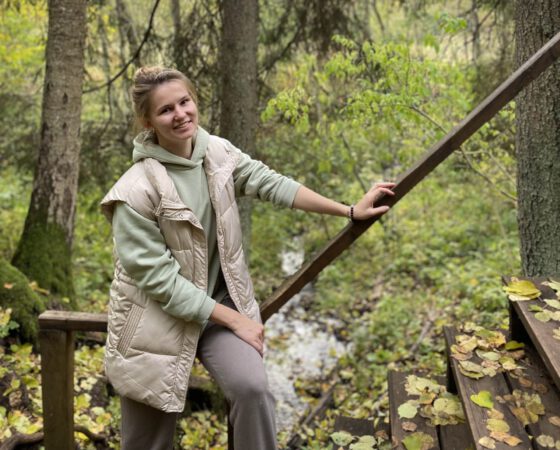
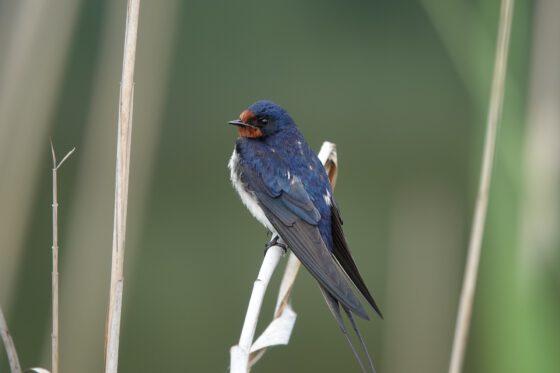 My name is Palina, I am an ESC-volunteer in BIOM and I would say that my winged relative or spirit bird (call it whatever you like :)) is a Barn swallow or Hirunda rustica as it comes in Latin. This little bird is quite social, it usually nests in groups and close to people’s houses, and I likewise enjoy being with my friends and family. Swallows are hardworking and always busy – they even feed on the wing! – just as I try not to waste time in vain and always look for things to do and to learn.
Another feature that we have in common is passion for traveling. Barn swallows are incorrigible wanderers, they spend winters in parts of Central and South America, and have been found as far south as Argentina — astonishing thousands of kilometers away. Yet, they always come back home and even like to reuse their nests year after year. So, one can even say they recycle – which also goes for me.
Swallow’s migration and yearly re-appearance usually fall at the winter’s end. They seem to bring spring with them and thus, these birds are perceived as a symbol of luck and positive change. And I as well try to put efforts into making the world around me a better place.
Coline – European Bee-eater
My name is Palina, I am an ESC-volunteer in BIOM and I would say that my winged relative or spirit bird (call it whatever you like :)) is a Barn swallow or Hirunda rustica as it comes in Latin. This little bird is quite social, it usually nests in groups and close to people’s houses, and I likewise enjoy being with my friends and family. Swallows are hardworking and always busy – they even feed on the wing! – just as I try not to waste time in vain and always look for things to do and to learn.
Another feature that we have in common is passion for traveling. Barn swallows are incorrigible wanderers, they spend winters in parts of Central and South America, and have been found as far south as Argentina — astonishing thousands of kilometers away. Yet, they always come back home and even like to reuse their nests year after year. So, one can even say they recycle – which also goes for me.
Swallow’s migration and yearly re-appearance usually fall at the winter’s end. They seem to bring spring with them and thus, these birds are perceived as a symbol of luck and positive change. And I as well try to put efforts into making the world around me a better place.
Coline – European Bee-eater
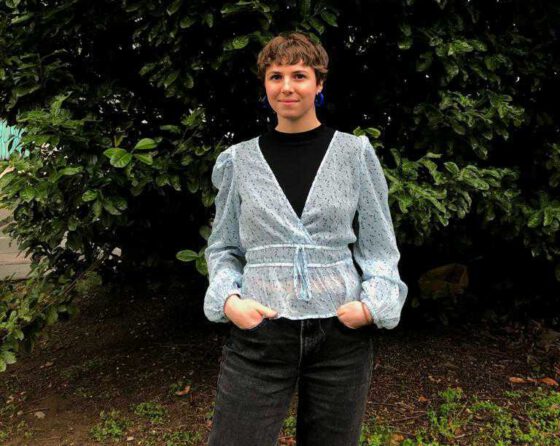
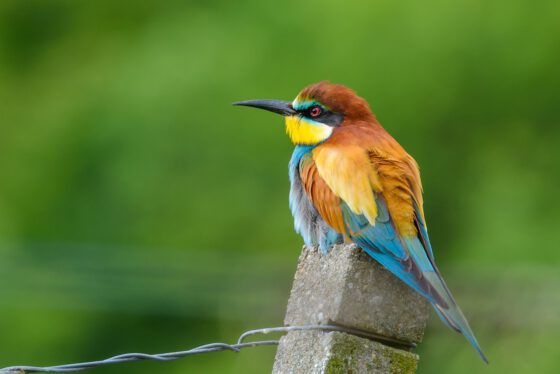 My name is Coline. Finding a bird that matches my personality has been relatively tedious, not because I am a unique specimen, but because bird knowledge is a whole new world to me. However, like the European Bee-eater of its Latin name Merops apiaster, I am quite flexible and have a facility to adapt to new environments. Hence, I am looking forward to learning and involving myself within BIOM organization over the upcoming 10 months. Just like the plumage of the European bee-eaters, you will recognize me by my colorful clothes. I like to think that my personality is just as colorful.
Socially, I identify with many of the characteristics of bee-eaters. First of all, they are gregarious birds that live in large groups. In the same way, you can find me always surrounded by friends or family and in social or cultural events. That’s why I will be part of the outreach team, to be in contact with the public. In addition, the species is known to be very vocal, making about 60 calls per minute when foraging for food, which seals a new common point with me as I am also very chatty. Finally, male European bee-eaters that have failed to breed tend to help other nests with chicks. In another context, solidarity is also a value that I adopt on a daily basis and it is directly related to my field of study since I have a master’s degree in international solidarity project management.
As I find interest in myths and legends, I will end my presentation with one that I discovered during my research. Within Greek mythology, the Theban Botres was mortally wounded by his father after eating the brains of a sheep that the father had sacrificed as an offering to the god Apollo. The god took pity on Botres and turned him into a bee-eater
Anton – Atlantic puffin
My name is Coline. Finding a bird that matches my personality has been relatively tedious, not because I am a unique specimen, but because bird knowledge is a whole new world to me. However, like the European Bee-eater of its Latin name Merops apiaster, I am quite flexible and have a facility to adapt to new environments. Hence, I am looking forward to learning and involving myself within BIOM organization over the upcoming 10 months. Just like the plumage of the European bee-eaters, you will recognize me by my colorful clothes. I like to think that my personality is just as colorful.
Socially, I identify with many of the characteristics of bee-eaters. First of all, they are gregarious birds that live in large groups. In the same way, you can find me always surrounded by friends or family and in social or cultural events. That’s why I will be part of the outreach team, to be in contact with the public. In addition, the species is known to be very vocal, making about 60 calls per minute when foraging for food, which seals a new common point with me as I am also very chatty. Finally, male European bee-eaters that have failed to breed tend to help other nests with chicks. In another context, solidarity is also a value that I adopt on a daily basis and it is directly related to my field of study since I have a master’s degree in international solidarity project management.
As I find interest in myths and legends, I will end my presentation with one that I discovered during my research. Within Greek mythology, the Theban Botres was mortally wounded by his father after eating the brains of a sheep that the father had sacrificed as an offering to the god Apollo. The god took pity on Botres and turned him into a bee-eater
Anton – Atlantic puffin
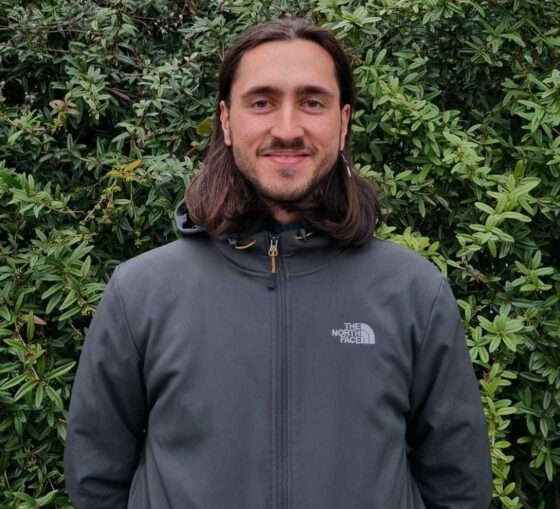
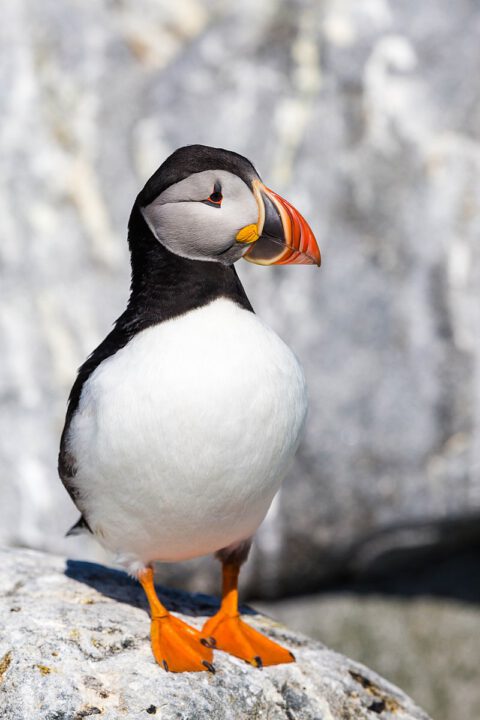 Hello! My name is Antón and I like to describe myself as an Atlantic puffin, also known as Fratercula arctica in scientific nomenclature. Why? Well, some behavioral and physical traits of these little birds remind me a lot about me, even though I am not a short person at all.
First of all, as its name suggests, the Atlantic puffin is a pelagic bird that inhabits regions of the Arctic and North Atlantic ocean. Geographically, this fits well with my origins because I was born next to the sea, in the northwestern part of Spain, where they come every cold season escaping from the harshness of winter in higher latitudes.
The migratory nature of these alcids makes me think of why I am here. I am passionate about discovering new cultures and landscapes as my background proves, because at the age of 25 I have already lived, studied and worked in four countries: Spain, Belgium, Italy and now Croatia.
Finally, what I probably love the most and makes me identify with them is their behavior and appearance. They are sociable, curious and love gatherings, but when nesting season ends they prefer to be alone, moving away from the mainland towards the open sea. Regarding their look, a picture is worth a thousand words! They are elegant and sober, but with a funny and clownish side, just like I consider myself to be.
Lejla – House sparrow
Hello! My name is Antón and I like to describe myself as an Atlantic puffin, also known as Fratercula arctica in scientific nomenclature. Why? Well, some behavioral and physical traits of these little birds remind me a lot about me, even though I am not a short person at all.
First of all, as its name suggests, the Atlantic puffin is a pelagic bird that inhabits regions of the Arctic and North Atlantic ocean. Geographically, this fits well with my origins because I was born next to the sea, in the northwestern part of Spain, where they come every cold season escaping from the harshness of winter in higher latitudes.
The migratory nature of these alcids makes me think of why I am here. I am passionate about discovering new cultures and landscapes as my background proves, because at the age of 25 I have already lived, studied and worked in four countries: Spain, Belgium, Italy and now Croatia.
Finally, what I probably love the most and makes me identify with them is their behavior and appearance. They are sociable, curious and love gatherings, but when nesting season ends they prefer to be alone, moving away from the mainland towards the open sea. Regarding their look, a picture is worth a thousand words! They are elegant and sober, but with a funny and clownish side, just like I consider myself to be.
Lejla – House sparrow
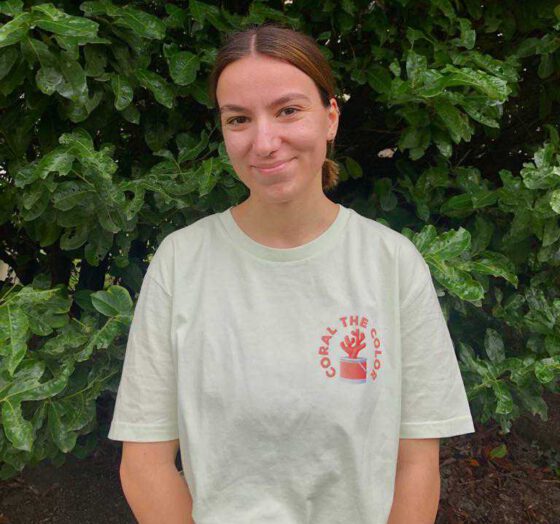
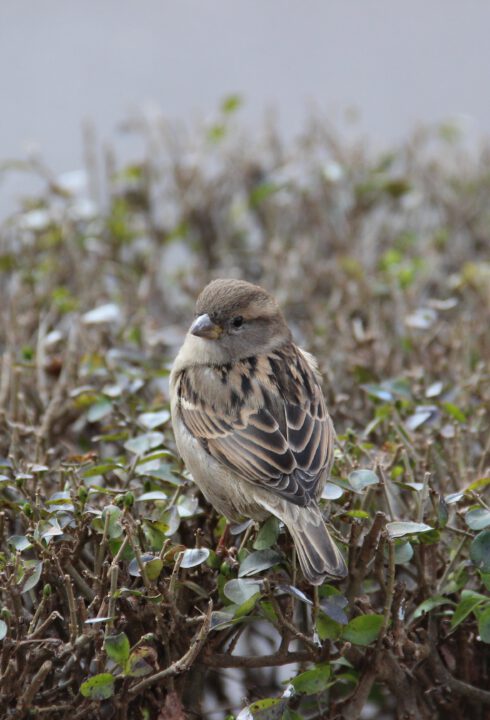 Hello, my name is Lejla and my favourite bird is the house sparrow, Passer domesticus, which I also like to identify with. Mainly because they were always around when I was growing up and now I see them wherever I go, back home in Sweden and here in Croatia. House sparrows give a sense of familiarity and comfort to new places and I like to think that I do the same. You always find them in groups, chatting away while looking for bread crumbs – just like me!
This small uncharacteristic bird might seem boring at first glance, but once you get to know these birds you can see that they have big personalities. They blend well into their surroundings with their indistinctive colours, but they are very observant birds, always watching if there is any food available, a group to join or they just observe what’s going on around them.
The house sparrow can be found all over the world, both in rural and urban environments as they are both opportunistic and adaptable, two characteristics which I have in common with them. They do everything together like feed, dust bath and roost in groups – you rarely see a house sparrow alone and the same goes for me!
Ivana – Yellow-legged gull
Hello, my name is Lejla and my favourite bird is the house sparrow, Passer domesticus, which I also like to identify with. Mainly because they were always around when I was growing up and now I see them wherever I go, back home in Sweden and here in Croatia. House sparrows give a sense of familiarity and comfort to new places and I like to think that I do the same. You always find them in groups, chatting away while looking for bread crumbs – just like me!
This small uncharacteristic bird might seem boring at first glance, but once you get to know these birds you can see that they have big personalities. They blend well into their surroundings with their indistinctive colours, but they are very observant birds, always watching if there is any food available, a group to join or they just observe what’s going on around them.
The house sparrow can be found all over the world, both in rural and urban environments as they are both opportunistic and adaptable, two characteristics which I have in common with them. They do everything together like feed, dust bath and roost in groups – you rarely see a house sparrow alone and the same goes for me!
Ivana – Yellow-legged gull
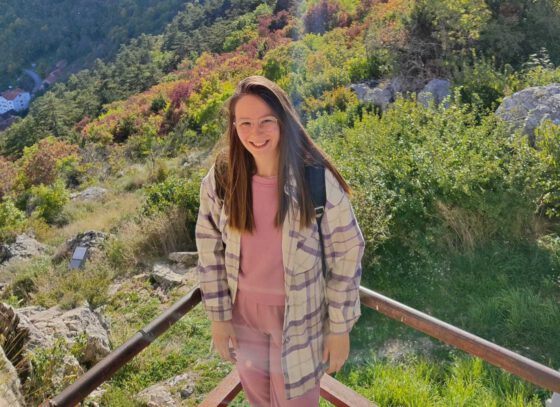
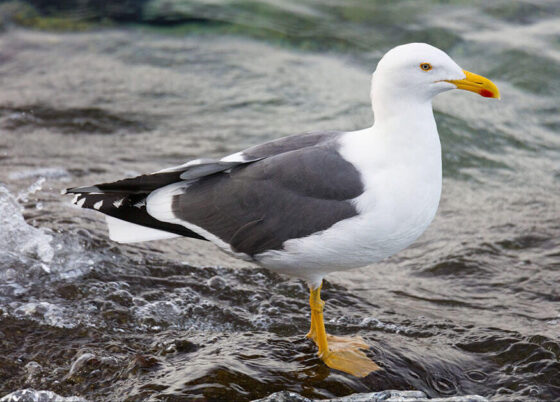 Hi, my name is Ivana and I am a volunteer in Biom association. The bird that I am similar to, or other way around, is the yellow-legged gull (Larus michahellis). Why yellow-legged gull you may ask? Out of all birds, this gull is so casual and always around that most people are blind to it and they don’t even notice it when they see it. I would say this is our strongest bond in terms of similarity. I am just like a gull, sometimes quiet but with a great empathy which comes to the surface when you most need it, it flashes just like gull’s wings while it is flying through endless blue sky.
Yellow-legged gull likes to travel large distances and is a common guest to almost all European countries. It can also be seen on garbage landfills or when it is stalking fellow fishermen. That is also one of the similarities: we are wanderers that like to explore and be at unusual places where no one expects us, but always with the thought that we will soon return to our habitat and float peacefully in the blue sea.
Yellow-legged gull is a highly adaptable bird which nests almost everywhere. For nesting, it best suits salt pans, pastures, sea and river shores, rocky and sandy shores, and sometimes even on the top of the buildings roof . We are similar even in terms of habitat, my life was marked by living in a blue building, aware that it might be nicer to live somewhere overlooking an open pasture, but like seagulls, adaptability has never been a problem for me. In addition to the fact that seagulls easily adapt to their environment, they often strongly influence it. They have an impact by cleaning our beaches of various waste, and considering that I also care a lot about their cleanliness and often participate in cleaning actions, so I can say that I and seagull can identify with our work habits.
Hi, my name is Ivana and I am a volunteer in Biom association. The bird that I am similar to, or other way around, is the yellow-legged gull (Larus michahellis). Why yellow-legged gull you may ask? Out of all birds, this gull is so casual and always around that most people are blind to it and they don’t even notice it when they see it. I would say this is our strongest bond in terms of similarity. I am just like a gull, sometimes quiet but with a great empathy which comes to the surface when you most need it, it flashes just like gull’s wings while it is flying through endless blue sky.
Yellow-legged gull likes to travel large distances and is a common guest to almost all European countries. It can also be seen on garbage landfills or when it is stalking fellow fishermen. That is also one of the similarities: we are wanderers that like to explore and be at unusual places where no one expects us, but always with the thought that we will soon return to our habitat and float peacefully in the blue sea.
Yellow-legged gull is a highly adaptable bird which nests almost everywhere. For nesting, it best suits salt pans, pastures, sea and river shores, rocky and sandy shores, and sometimes even on the top of the buildings roof . We are similar even in terms of habitat, my life was marked by living in a blue building, aware that it might be nicer to live somewhere overlooking an open pasture, but like seagulls, adaptability has never been a problem for me. In addition to the fact that seagulls easily adapt to their environment, they often strongly influence it. They have an impact by cleaning our beaches of various waste, and considering that I also care a lot about their cleanliness and often participate in cleaning actions, so I can say that I and seagull can identify with our work habits.


 My name is Palina, I am an ESC-volunteer in BIOM and I would say that my winged relative or spirit bird (call it whatever you like :)) is a Barn swallow or Hirunda rustica as it comes in Latin. This little bird is quite social, it usually nests in groups and close to people’s houses, and I likewise enjoy being with my friends and family. Swallows are hardworking and always busy – they even feed on the wing! – just as I try not to waste time in vain and always look for things to do and to learn.
Another feature that we have in common is passion for traveling. Barn swallows are incorrigible wanderers, they spend winters in parts of Central and South America, and have been found as far south as Argentina — astonishing thousands of kilometers away. Yet, they always come back home and even like to reuse their nests year after year. So, one can even say they recycle – which also goes for me.
Swallow’s migration and yearly re-appearance usually fall at the winter’s end. They seem to bring spring with them and thus, these birds are perceived as a symbol of luck and positive change. And I as well try to put efforts into making the world around me a better place.
Coline – European Bee-eater
My name is Palina, I am an ESC-volunteer in BIOM and I would say that my winged relative or spirit bird (call it whatever you like :)) is a Barn swallow or Hirunda rustica as it comes in Latin. This little bird is quite social, it usually nests in groups and close to people’s houses, and I likewise enjoy being with my friends and family. Swallows are hardworking and always busy – they even feed on the wing! – just as I try not to waste time in vain and always look for things to do and to learn.
Another feature that we have in common is passion for traveling. Barn swallows are incorrigible wanderers, they spend winters in parts of Central and South America, and have been found as far south as Argentina — astonishing thousands of kilometers away. Yet, they always come back home and even like to reuse their nests year after year. So, one can even say they recycle – which also goes for me.
Swallow’s migration and yearly re-appearance usually fall at the winter’s end. They seem to bring spring with them and thus, these birds are perceived as a symbol of luck and positive change. And I as well try to put efforts into making the world around me a better place.
Coline – European Bee-eater

 My name is Coline. Finding a bird that matches my personality has been relatively tedious, not because I am a unique specimen, but because bird knowledge is a whole new world to me. However, like the European Bee-eater of its Latin name Merops apiaster, I am quite flexible and have a facility to adapt to new environments. Hence, I am looking forward to learning and involving myself within BIOM organization over the upcoming 10 months. Just like the plumage of the European bee-eaters, you will recognize me by my colorful clothes. I like to think that my personality is just as colorful.
Socially, I identify with many of the characteristics of bee-eaters. First of all, they are gregarious birds that live in large groups. In the same way, you can find me always surrounded by friends or family and in social or cultural events. That’s why I will be part of the outreach team, to be in contact with the public. In addition, the species is known to be very vocal, making about 60 calls per minute when foraging for food, which seals a new common point with me as I am also very chatty. Finally, male European bee-eaters that have failed to breed tend to help other nests with chicks. In another context, solidarity is also a value that I adopt on a daily basis and it is directly related to my field of study since I have a master’s degree in international solidarity project management.
As I find interest in myths and legends, I will end my presentation with one that I discovered during my research. Within Greek mythology, the Theban Botres was mortally wounded by his father after eating the brains of a sheep that the father had sacrificed as an offering to the god Apollo. The god took pity on Botres and turned him into a bee-eater
Anton – Atlantic puffin
My name is Coline. Finding a bird that matches my personality has been relatively tedious, not because I am a unique specimen, but because bird knowledge is a whole new world to me. However, like the European Bee-eater of its Latin name Merops apiaster, I am quite flexible and have a facility to adapt to new environments. Hence, I am looking forward to learning and involving myself within BIOM organization over the upcoming 10 months. Just like the plumage of the European bee-eaters, you will recognize me by my colorful clothes. I like to think that my personality is just as colorful.
Socially, I identify with many of the characteristics of bee-eaters. First of all, they are gregarious birds that live in large groups. In the same way, you can find me always surrounded by friends or family and in social or cultural events. That’s why I will be part of the outreach team, to be in contact with the public. In addition, the species is known to be very vocal, making about 60 calls per minute when foraging for food, which seals a new common point with me as I am also very chatty. Finally, male European bee-eaters that have failed to breed tend to help other nests with chicks. In another context, solidarity is also a value that I adopt on a daily basis and it is directly related to my field of study since I have a master’s degree in international solidarity project management.
As I find interest in myths and legends, I will end my presentation with one that I discovered during my research. Within Greek mythology, the Theban Botres was mortally wounded by his father after eating the brains of a sheep that the father had sacrificed as an offering to the god Apollo. The god took pity on Botres and turned him into a bee-eater
Anton – Atlantic puffin

 Hello! My name is Antón and I like to describe myself as an Atlantic puffin, also known as Fratercula arctica in scientific nomenclature. Why? Well, some behavioral and physical traits of these little birds remind me a lot about me, even though I am not a short person at all.
First of all, as its name suggests, the Atlantic puffin is a pelagic bird that inhabits regions of the Arctic and North Atlantic ocean. Geographically, this fits well with my origins because I was born next to the sea, in the northwestern part of Spain, where they come every cold season escaping from the harshness of winter in higher latitudes.
The migratory nature of these alcids makes me think of why I am here. I am passionate about discovering new cultures and landscapes as my background proves, because at the age of 25 I have already lived, studied and worked in four countries: Spain, Belgium, Italy and now Croatia.
Finally, what I probably love the most and makes me identify with them is their behavior and appearance. They are sociable, curious and love gatherings, but when nesting season ends they prefer to be alone, moving away from the mainland towards the open sea. Regarding their look, a picture is worth a thousand words! They are elegant and sober, but with a funny and clownish side, just like I consider myself to be.
Lejla – House sparrow
Hello! My name is Antón and I like to describe myself as an Atlantic puffin, also known as Fratercula arctica in scientific nomenclature. Why? Well, some behavioral and physical traits of these little birds remind me a lot about me, even though I am not a short person at all.
First of all, as its name suggests, the Atlantic puffin is a pelagic bird that inhabits regions of the Arctic and North Atlantic ocean. Geographically, this fits well with my origins because I was born next to the sea, in the northwestern part of Spain, where they come every cold season escaping from the harshness of winter in higher latitudes.
The migratory nature of these alcids makes me think of why I am here. I am passionate about discovering new cultures and landscapes as my background proves, because at the age of 25 I have already lived, studied and worked in four countries: Spain, Belgium, Italy and now Croatia.
Finally, what I probably love the most and makes me identify with them is their behavior and appearance. They are sociable, curious and love gatherings, but when nesting season ends they prefer to be alone, moving away from the mainland towards the open sea. Regarding their look, a picture is worth a thousand words! They are elegant and sober, but with a funny and clownish side, just like I consider myself to be.
Lejla – House sparrow

 Hello, my name is Lejla and my favourite bird is the house sparrow, Passer domesticus, which I also like to identify with. Mainly because they were always around when I was growing up and now I see them wherever I go, back home in Sweden and here in Croatia. House sparrows give a sense of familiarity and comfort to new places and I like to think that I do the same. You always find them in groups, chatting away while looking for bread crumbs – just like me!
This small uncharacteristic bird might seem boring at first glance, but once you get to know these birds you can see that they have big personalities. They blend well into their surroundings with their indistinctive colours, but they are very observant birds, always watching if there is any food available, a group to join or they just observe what’s going on around them.
The house sparrow can be found all over the world, both in rural and urban environments as they are both opportunistic and adaptable, two characteristics which I have in common with them. They do everything together like feed, dust bath and roost in groups – you rarely see a house sparrow alone and the same goes for me!
Ivana – Yellow-legged gull
Hello, my name is Lejla and my favourite bird is the house sparrow, Passer domesticus, which I also like to identify with. Mainly because they were always around when I was growing up and now I see them wherever I go, back home in Sweden and here in Croatia. House sparrows give a sense of familiarity and comfort to new places and I like to think that I do the same. You always find them in groups, chatting away while looking for bread crumbs – just like me!
This small uncharacteristic bird might seem boring at first glance, but once you get to know these birds you can see that they have big personalities. They blend well into their surroundings with their indistinctive colours, but they are very observant birds, always watching if there is any food available, a group to join or they just observe what’s going on around them.
The house sparrow can be found all over the world, both in rural and urban environments as they are both opportunistic and adaptable, two characteristics which I have in common with them. They do everything together like feed, dust bath and roost in groups – you rarely see a house sparrow alone and the same goes for me!
Ivana – Yellow-legged gull

 Hi, my name is Ivana and I am a volunteer in Biom association. The bird that I am similar to, or other way around, is the yellow-legged gull (Larus michahellis). Why yellow-legged gull you may ask? Out of all birds, this gull is so casual and always around that most people are blind to it and they don’t even notice it when they see it. I would say this is our strongest bond in terms of similarity. I am just like a gull, sometimes quiet but with a great empathy which comes to the surface when you most need it, it flashes just like gull’s wings while it is flying through endless blue sky.
Yellow-legged gull likes to travel large distances and is a common guest to almost all European countries. It can also be seen on garbage landfills or when it is stalking fellow fishermen. That is also one of the similarities: we are wanderers that like to explore and be at unusual places where no one expects us, but always with the thought that we will soon return to our habitat and float peacefully in the blue sea.
Yellow-legged gull is a highly adaptable bird which nests almost everywhere. For nesting, it best suits salt pans, pastures, sea and river shores, rocky and sandy shores, and sometimes even on the top of the buildings roof . We are similar even in terms of habitat, my life was marked by living in a blue building, aware that it might be nicer to live somewhere overlooking an open pasture, but like seagulls, adaptability has never been a problem for me. In addition to the fact that seagulls easily adapt to their environment, they often strongly influence it. They have an impact by cleaning our beaches of various waste, and considering that I also care a lot about their cleanliness and often participate in cleaning actions, so I can say that I and seagull can identify with our work habits.
Hi, my name is Ivana and I am a volunteer in Biom association. The bird that I am similar to, or other way around, is the yellow-legged gull (Larus michahellis). Why yellow-legged gull you may ask? Out of all birds, this gull is so casual and always around that most people are blind to it and they don’t even notice it when they see it. I would say this is our strongest bond in terms of similarity. I am just like a gull, sometimes quiet but with a great empathy which comes to the surface when you most need it, it flashes just like gull’s wings while it is flying through endless blue sky.
Yellow-legged gull likes to travel large distances and is a common guest to almost all European countries. It can also be seen on garbage landfills or when it is stalking fellow fishermen. That is also one of the similarities: we are wanderers that like to explore and be at unusual places where no one expects us, but always with the thought that we will soon return to our habitat and float peacefully in the blue sea.
Yellow-legged gull is a highly adaptable bird which nests almost everywhere. For nesting, it best suits salt pans, pastures, sea and river shores, rocky and sandy shores, and sometimes even on the top of the buildings roof . We are similar even in terms of habitat, my life was marked by living in a blue building, aware that it might be nicer to live somewhere overlooking an open pasture, but like seagulls, adaptability has never been a problem for me. In addition to the fact that seagulls easily adapt to their environment, they often strongly influence it. They have an impact by cleaning our beaches of various waste, and considering that I also care a lot about their cleanliness and often participate in cleaning actions, so I can say that I and seagull can identify with our work habits.





